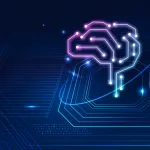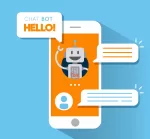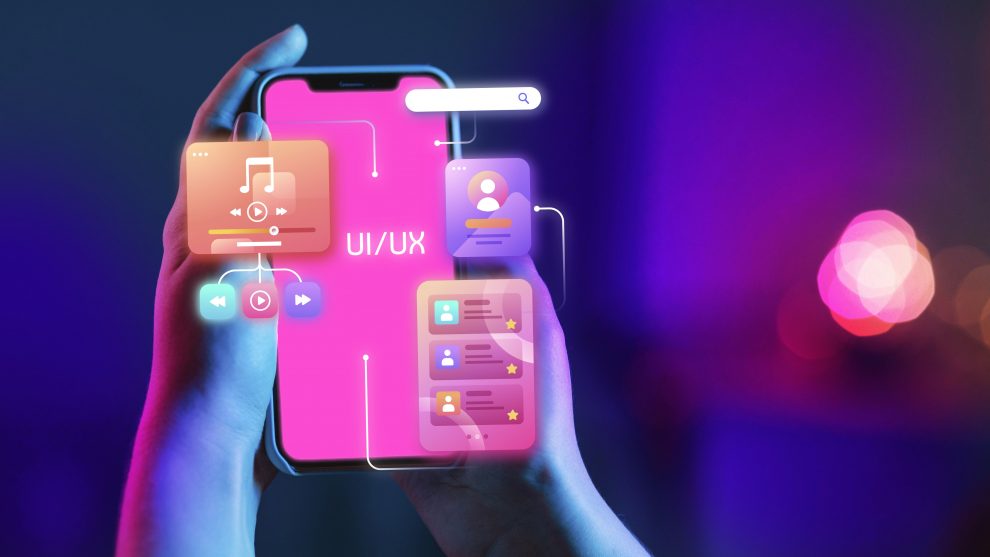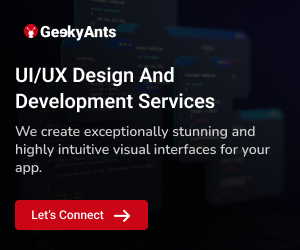In today’s tech-savvy world, user interface (UI) and user experience (UX) have become paramount for the success of any digital product, especially mobile applications. As the demand for seamless and intuitive interactions continues to grow, designers and developers are constantly seeking innovative ways to enhance the UI/UX of their apps. This blog explores how Generative Artificial Intelligence (AI), a game-changing innovation, is taking app interfaces to the next level, revolutionizing the way we interact with digital products.
What is Generative AI?
Generative Artificial Intelligence refers to a class of AI models that can generate data, content, or designs autonomously. These models are trained on vast datasets and can produce new, coherent, and contextually relevant content, such as images, text, and even UI elements. One of the most prominent examples of Generative AI is the GPT (Generative Pre-trained Transformer) series, which has been at the forefront of AI advancements.
Enhancing UI/UX with Generative AI

In today’s rapidly evolving technological landscape, the user interface (UI) and user experience (UX) of digital products have become paramount for success. Users expect intuitive, engaging, and personalized interactions with applications. It’s no longer enough for apps to simply function; they must also provide a delightful and user-centric experience.
This demand for excellence has led to a growing interest in Generative Artificial Intelligence (AI), a revolutionary field that holds immense promise for enhancing UI/UX. Generative AI models, such as GPT-3 and its successors, are trained on vast datasets and have the ability to generate content, designs, and even entire user interfaces autonomously. In this blog, we will delve into the ways in which Generative AI is reshaping UI/UX, transforming the app development landscape as we know it.
Personalization:
Generative AI can analyze user behavior and preferences to create personalized UI/UX elements. For instance, it can adjust the layout, color scheme, or content presentation based on individual user data. This level of personalization ensures that each user has a tailored and engaging experience, ultimately boosting user satisfaction and retention.
Design Prototyping:
Design prototyping can be time-consuming and costly. Generative AI can rapidly generate design prototypes, allowing designers to experiment with various layouts, styles, and components. This accelerates the design process, enabling faster iterations and reducing development time.
Content Generation:
AI can assist in creating content for apps, including product descriptions, articles, or chatbot responses. By generating high-quality content, apps can offer users a richer and more informative experience, improving overall user engagement.
A/B testing:
Generative AI can be employed to generate variations of UI elements for A/B testing. This ensures that design changes are data-driven and have a positive impact on user engagement. AI can analyze user feedback and behavior to refine the design further.
Accessibility:
AI-driven interfaces can enhance accessibility by automatically generating alternative formats for users with disabilities. For example, AI can create audio descriptions for images or provide text-to-speech functionality, making apps more inclusive and user-friendly.
User Assistance:
Chatbots and virtual assistants powered by Generative AI can offer real-time assistance to users, helping them navigate the app, find information, or troubleshoot issues. This not only improves UX but also reduces the burden on customer support teams.
How Has AI Evolved In the Design World?
Artificial Intelligence (AI) has undergone a remarkable evolution, rapidly expanding its influence across various industries. In the design world, AI has emerged as a transformative force, reshaping the creative process, enhancing efficiency, and unlocking new possibilities. Let’s delve into the fascinating journey of AI in design and explore how it has evolved.
Early AI Assistance:
AI’s initial foray into design involved simple tasks like automating repetitive processes, such as resizing images or generating basic graphics. These rudimentary AI tools aimed to streamline designers’ workflows but had limited creative capabilities.Generative Design:
One of the most significant leaps in AI’s role in design came with the advent of Generative Design. This technology harnesses the power of algorithms and machine learning to produce design variations autonomously. Architects, engineers, and product designers use generative design to explore numerous design possibilities, often leading to innovative and efficient solutions.AI-Powered Creativity:
AI’s capacity to generate creative content has expanded dramatically. AI-driven tools now assist in generating written content, designing logos, and even producing art. They analyze vast datasets to identify trends and preferences, enabling designers to create content that resonates with specific audiences.Personalization and User Experience:
AI has transformed user experiences by enabling personalization on a massive scale. AI algorithms analyze user behavior and preferences to customize interfaces, content recommendations, and product suggestions. This personalized approach enhances user engagement and satisfaction.Predictive Analytics:
Designers now benefit from AI-powered predictive analytics tools. These tools forecast design trends, allowing designers to stay ahead of the curve. They provide insights into user behavior and preferences, helping designers make data-driven decisions.Ethical Considerations:
As AI plays a more prominent role in design, ethical considerations have come to the forefront. Questions about the responsible use of AI, the potential for bias in algorithms, and the impact on creativity and employment are important topics for the design community to address.Augmented Creativity:
AI is becoming a creative partner rather than a replacement for designers. AI-driven tools aid in brainstorming, automate routine tasks, and offer suggestions, thereby augmenting human creativity. Designers can focus on high-level conceptualization and leave repetitive work to AI.Democratization of Design:
AI democratizes design by making sophisticated design tools accessible to a broader audience. It allows small businesses, startups, and individuals to create professional-grade designs without extensive design expertise.Future Prospects:
The evolution of AI in the design world is far from over. As AI models become more advanced and user-friendly, we can anticipate even more profound changes. AI’s potential to revolutionize virtual and augmented reality, 3D design, and immersive experiences holds tremendous promise.
Generative Design in Architecture:
Optimized Structural Design:
Generative design has revolutionized architectural practices by automating the creation of structural designs. Architects and engineers can input parameters and constraints, and AI algorithms generate numerous design iterations. This process helps in optimizing structures for factors like load-bearing capacity and material efficiency.Sustainable Architecture:
Sustainability is a critical concern in modern architecture. Generative design enables the creation of eco-friendly and energy-efficient buildings. AI algorithms consider environmental factors like sunlight, wind flow, and energy consumption to develop designs that reduce the environmental footprint.Complex and Unique Designs:
Generative design allows architects to explore intricate and innovative designs that were previously challenging to conceive. Architects can experiment with unconventional shapes, patterns, and structures to create visually striking and functional buildings.Faster Prototyping:
AI-driven generative design accelerates the prototyping phase. Architects can quickly iterate through design options, leading to faster decision-making and reduced project timelines.
Challenges and Considerations
While Generative AI holds immense potential for enhancing UI/UX, there are several challenges and considerations:
Data Privacy:
One of the foremost challenges in implementing Generative AI for UI/UX is ensuring robust data privacy. As organizations strive to personalize user experiences, they must tread carefully to avoid infringing on user privacy rights. To address this, it’s essential to adopt stringent data protection measures and adhere to relevant regulations. For instance, the General Data Protection Regulation (GDPR) in Europe mandates explicit consent for data collection, the right to be forgotten, and stringent data handling practices. Similarly, the California Consumer Privacy Act (CCPA) sets requirements for transparency in data usage, enabling users to control how their data is utilized.
Ethical Concerns:
AI-generated content should be designed and managed in ways that align with ethical guidelines. There’s a growing concern about AI systems inadvertently producing biased or harmful content. Developers and designers must actively work to mitigate these issues. This includes monitoring and controlling AI outputs to prevent the spread of misinformation or harmful narratives. Moreover, it’s crucial to foster transparency in how AI models work, ensuring that users are aware of AI-generated elements in the UI/UX.
Integration Complexity:
Integrating Generative AI into app development is a complex task that demands specialized knowledge and resources. AI technologies are rapidly evolving, and keeping up with the latest advancements requires a dedicated team with expertise in AI model development and integration. Additionally, organizations need to invest in the infrastructure required for AI implementation, which includes powerful hardware and software frameworks. Overcoming these integration challenges requires careful planning and long-term commitment.
Continuous Learning:
Generative AI models are not static; they require ongoing learning and refinement to remain effective. This implies a sustained investment in both time and resources. Continuous learning involves retraining models on new data, improving algorithms, and adapting to changing user preferences. Neglecting this aspect can lead to AI-generated UI/UX becoming outdated or less relevant over time. Therefore, organizations must allocate resources for the long-term maintenance and improvement of their AI systems.
In this blog, we will delve into the ways in which Generative AI is reshaping UI/UX, transforming the app development landscape as we know it. For more insights on enhancing user engagement through Generative AI, check out our blog : Enhancing User Engagement through Generative AI
Generative AI to improve app interfaces:
Google AI’s Imagen:
Google AI has developed a new Generative AI model called Imagen that can create photorealistic images from text descriptions. Companies like GeekyAnts can harness this technology to enhance app interfaces by integrating custom backgrounds, avatars, or product images, providing users with a more visually immersive experience.Apple’s Genie AI Acquisition:
Apple’s acquisition of Genie AI, a startup specializing in Generative AI technology for mobile apps, opens the door to improving the design and functionality of Apple’s apps. Collaborating with companies like GeekyAnts, Apple could enhance the user experience in apps like Siri, Maps, and Photos, making them more intuitive and visually appealing.Facebook’s Personalized News Feeds:
Facebook’s use of Generative AI to create personalized news feeds has the potential to enhance the relevance and engagement of app content. With companies like GeekyAnts, this technology can be applied to develop personalized app interfaces that adapt to individual user preferences and behavior.Netflix’s Personalized Thumbnails:
Netflix’s utilization of Generative AI to create personalized thumbnails for movies and TV shows can significantly improve content discoverability within apps. Collaborating with companies like GeekyAnts can extend this capability to create tailored app interfaces that encourage users to explore and engage with content more effectively.GeekyAnts:
GeekyAnts, a prominent player in the world of software development, extends its expertise seamlessly into the realm of UI/UX design. With a strong commitment to innovation and user-centric design principles, GeekyAnts has emerged as a trusted partner for businesses seeking to create intuitive and visually compelling user interfaces. Their team of skilled designers and developers work in tandem to craft UI/UX solutions that not only meet but exceed user expectations.
Conclusion
Generative AI is undeniably the next frontier in UI/UX design. It has the power to revolutionize the way we interact with digital products by personalizing experiences, accelerating design processes, and improving accessibility. As technology continues to advance, integrating Generative AI into app development will become a competitive advantage, ensuring that apps are not just functional but also delightful to use. However, it’s crucial to approach this innovation with a commitment to privacy, ethics, and ongoing learning to unlock its full potential in enhancing UI/UX. The future of app interfaces is here, and it’s powered by Generative AI.

























